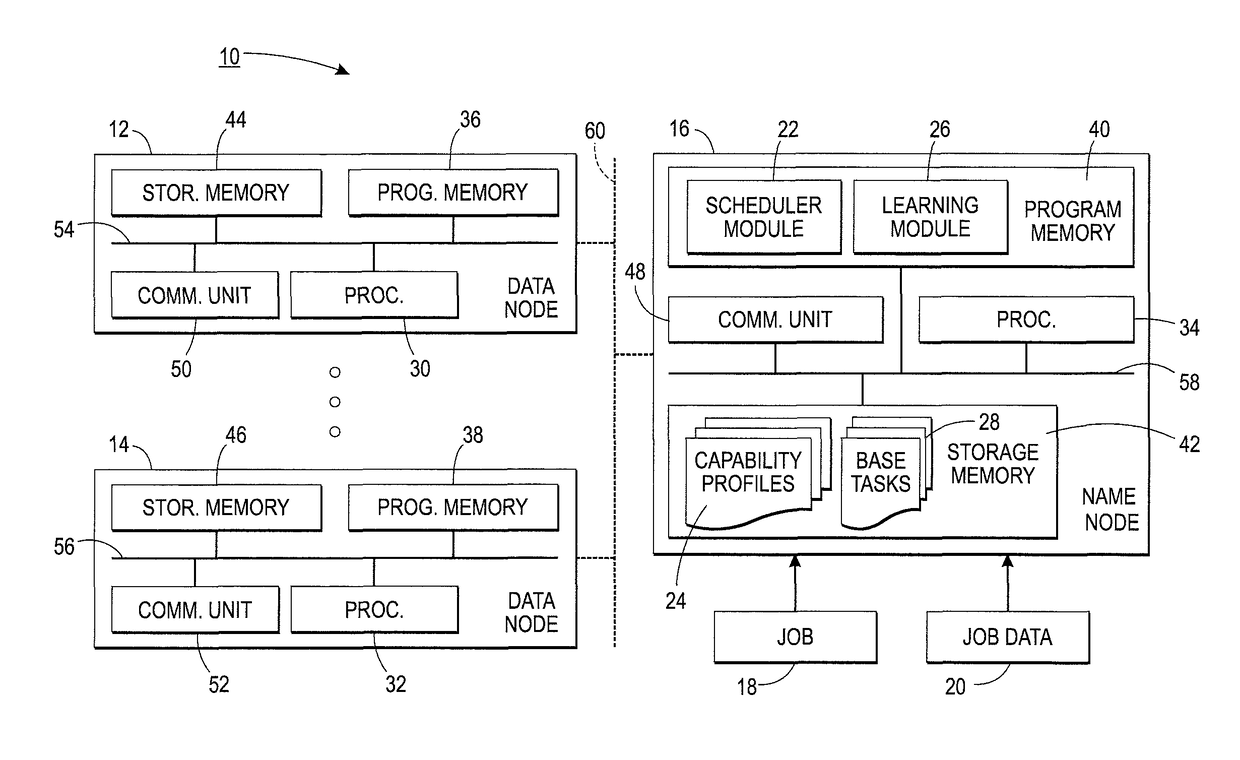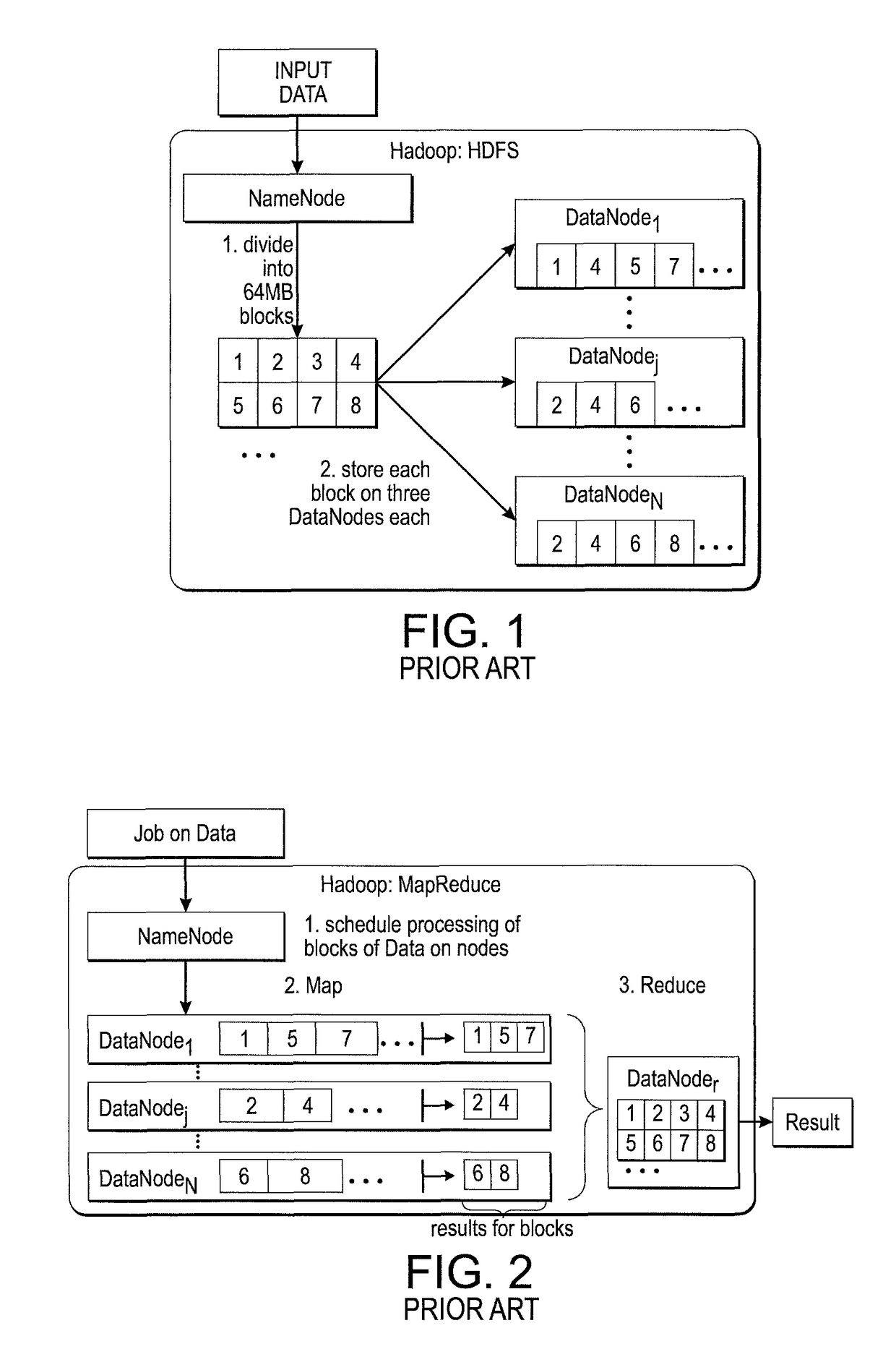System and method for efficient task scheduling in heterogeneous, distributed compute infrastructures via pervasive diagnosis
a distributed compute infrastructure and task scheduling technology, applied in the field of data processing, can solve problems such as compromising global metrics, such as throughput or maximum delay, and known map-reduce frameworks that do not efficiently schedule tasks
- Summary
- Abstract
- Description
- Claims
- Application Information
AI Technical Summary
Problems solved by technology
Method used
Image
Examples
Embodiment Construction
[0022]Recognizing that many map-reduce clusters include heterogeneous nodes, the present application proposes an efficient scheduler that matches jobs to compute nodes best suited for the specific needs of the jobs in order to increase the overall throughput. For instance, if a cluster is processing two jobs, one which is very compute intense and one that is reading and writing a lot to disk, then an optimal schedule would be one where the first job's tasks get scheduled on nodes with fast central processing units (CPUs), but slow disks, and the second job's tasks get scheduled on nodes with fast disks, but slow CPUs.
[0023]Since machine specific capabilities do not usually change frequently, it is reasonable to assume these to be known. However, a challenge with implementing an efficient scheduler for heterogeneous clusters is that the job specific resource requirements are not known in advance. It is also unreasonable to expect a programmer to estimate and specify them.
[0024]The pr...
PUM
 Login to view more
Login to view more Abstract
Description
Claims
Application Information
 Login to view more
Login to view more - R&D Engineer
- R&D Manager
- IP Professional
- Industry Leading Data Capabilities
- Powerful AI technology
- Patent DNA Extraction
Browse by: Latest US Patents, China's latest patents, Technical Efficacy Thesaurus, Application Domain, Technology Topic.
© 2024 PatSnap. All rights reserved.Legal|Privacy policy|Modern Slavery Act Transparency Statement|Sitemap



